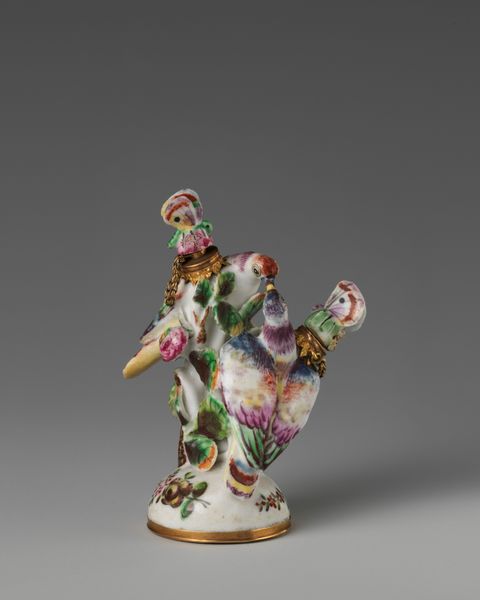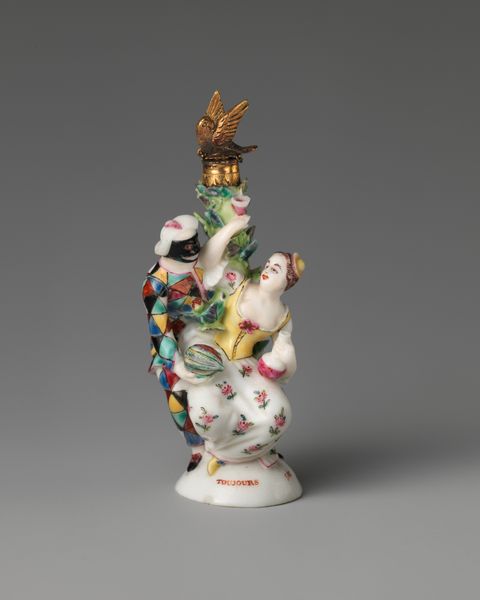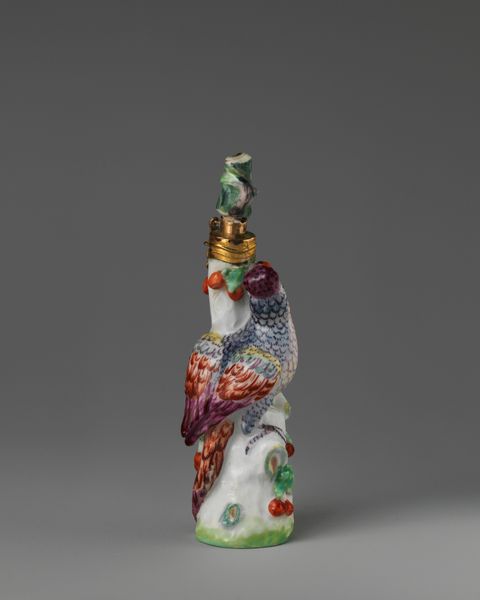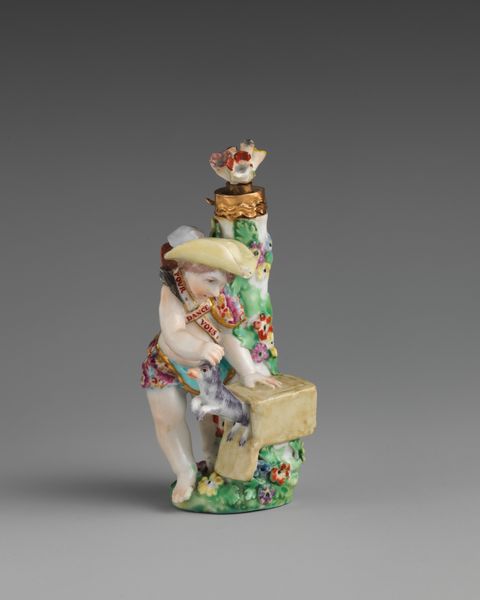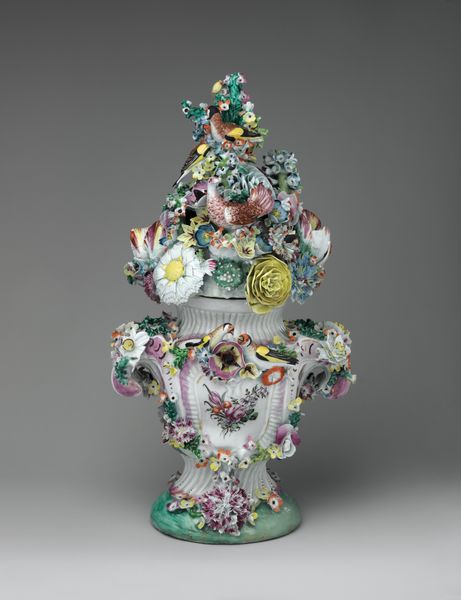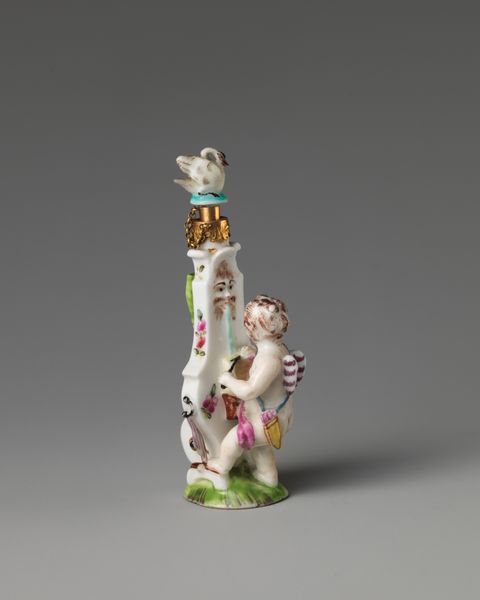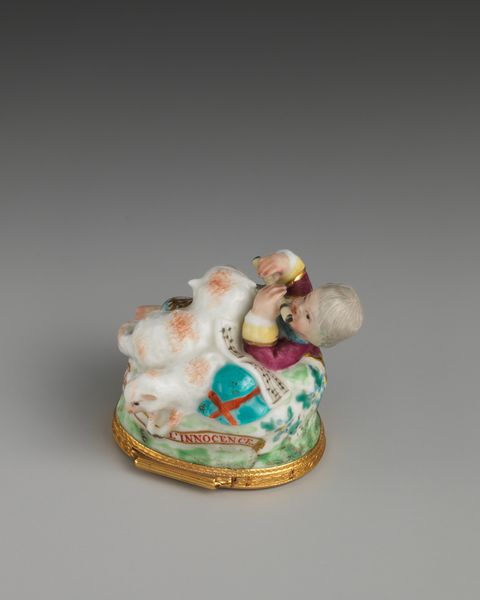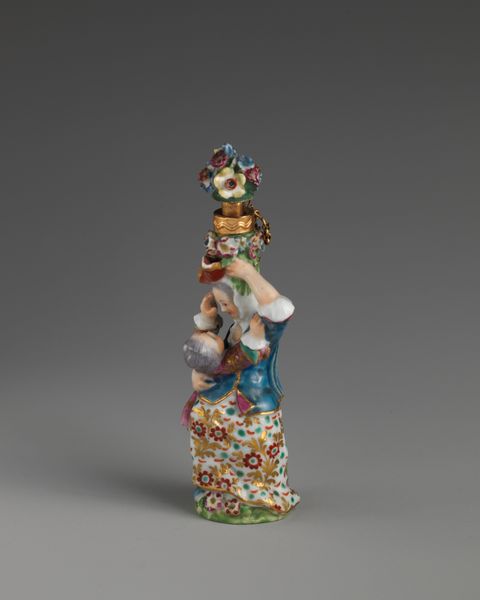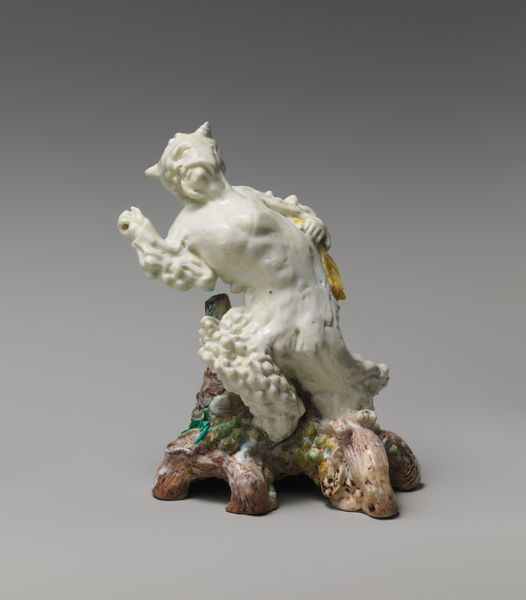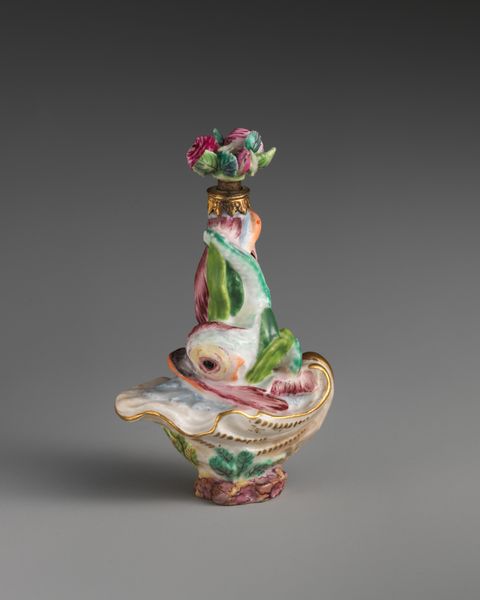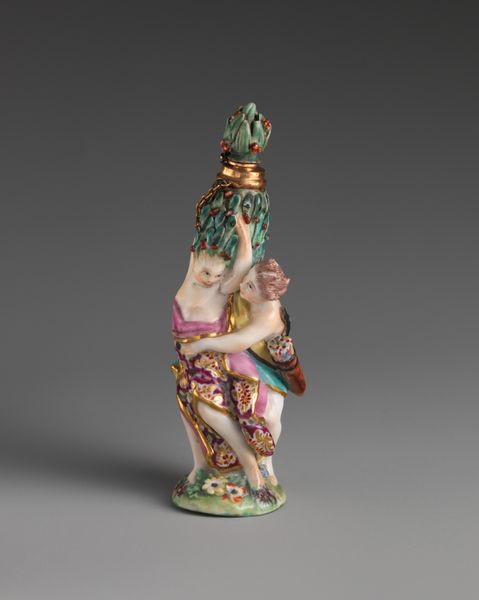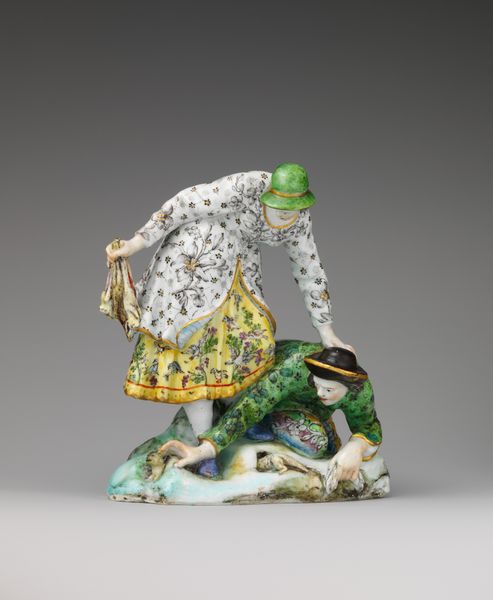
ceramic, porcelain, sculpture
#
ceramic
#
porcelain
#
figuration
#
sculpture
#
men
#
genre-painting
#
decorative-art
#
rococo
Dimensions: 2 3/4 × 2 in. (7 × 5.1 cm)
Copyright: Public Domain
Curator: Here we have a porcelain sculpture titled "Harlequin and Rooster," crafted sometime between 1750 and 1765 by the Chelsea Porcelain Manufactory. Editor: My first thought is how theatrically frantic it feels. The figure's posture, that wide-open mouth...it's almost operatic. Curator: Indeed! The Harlequin, rooted in the Commedia dell'arte tradition, embodies that spirited energy. The figure would have been viewed differently in the 18th century in a time when Europe had consolidated many autocratic regimes: as something closer to anarchic liberation from rules than what is often understood as the figure today. This vibrant genre painting captures the lightheartedness associated with that tradition while hinting at a more subversive symbolism. Editor: Subversive is an interesting choice of words. Beyond the implied comedic performance, the rooster itself is heavy with symbolic meaning, right? A symbol of vigilance, yes, but also sometimes of boastfulness or even lechery. The combination seems a potent little narrative. Curator: Absolutely. Gender and class definitely play out here. Harlequin, a character unbound by social norms, interacts with the rooster, an animal whose behavior has often been correlated to masculine performance. In many ways this is the visual story of the subversion of the patriarchy--on its face something very entertaining but that pokes at some very raw societal norms. Editor: And that the artists decided to set him near an atrophied tree to convey a sense of isolation adds complexity. I wonder, were similar scenes recurring themes during that time period? Curator: Absolutely! Consider the proliferation of genre painting. Scenes featuring harlequins and other figures from popular entertainments appeared often in decorative art throughout the Rococo period. However, the attention to costume detail here, along with a complex underlying sociopolitical critique, points to its intended value as a cultural critique in and of itself. Editor: Seeing these kinds of cultural critiques play out on decorative objects brings fresh context to consider as a way to reveal something novel. Curator: It underscores art's power to weave historical narratives and cultural introspection within a single work. Thank you for this, very fruitful.
Comments
No comments
Be the first to comment and join the conversation on the ultimate creative platform.
